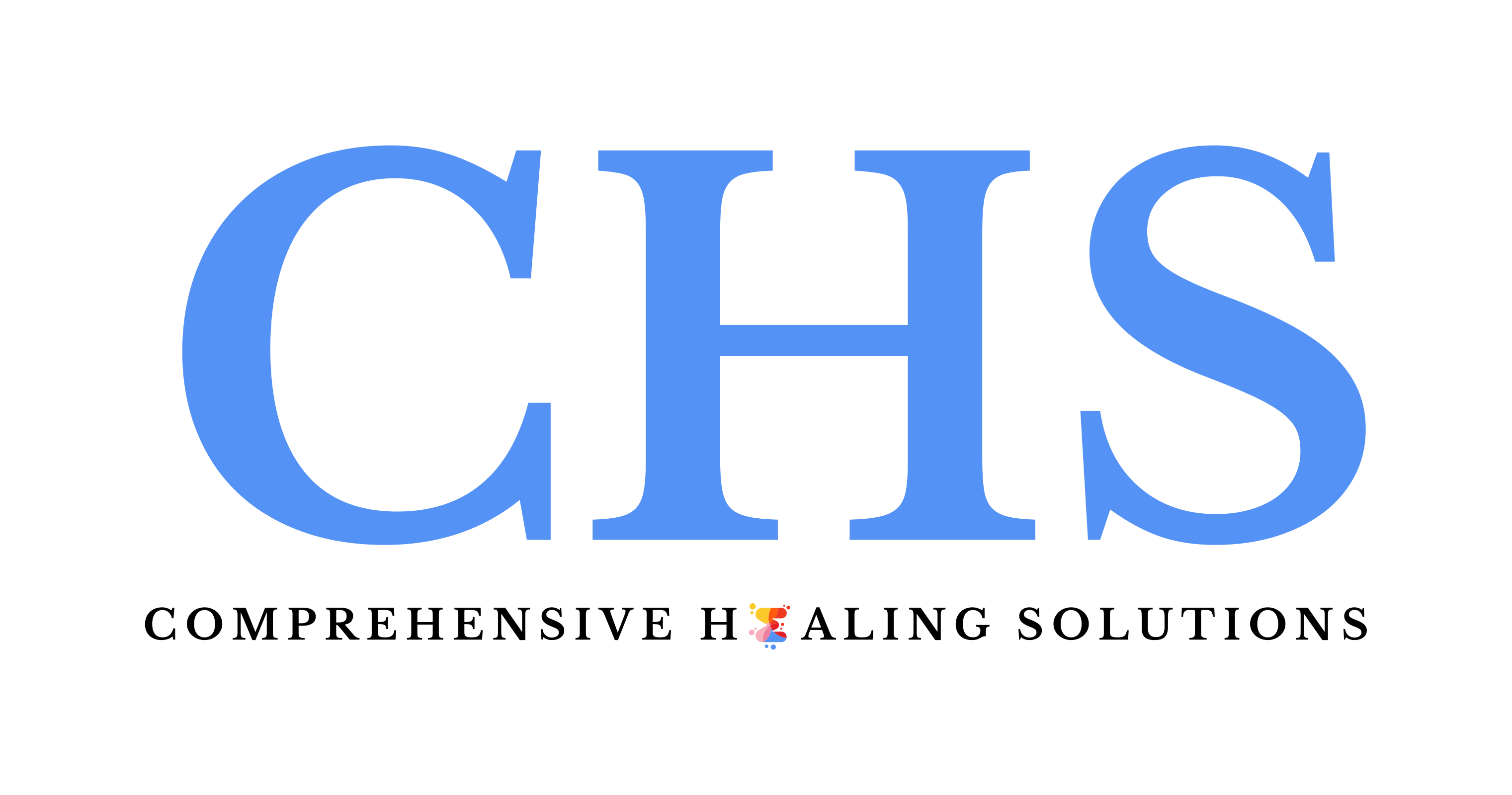
Polyvagal Theory: Understanding the Nervous System’s Role in Healing
Polyvagal Theory provides a framework for understanding how the nervous system responds to stress, trauma, and safety. Developed by Dr. Stephen Porges, this theory explores how the autonomic nervous system influences emotional regulation, social engagement, and trauma recovery, offering new insights into therapeutic approaches for healing and well-being.
Polyvagal Theory is a groundbreaking concept that has transformed our understanding of the human nervous system and its impact on mental health and well-being. Introduced by neuroscientist Dr. Stephen Porges in the 1990s, this theory emphasizes the role of the vagus nerve in regulating the autonomic nervous system (ANS), which controls our body's response to stress, safety, and social interactions.
At its core, Polyvagal Theory explains how the body’s physiological state influences behavior, emotions, and social engagement. It posits that the ANS is not just a simple on-off system but rather a hierarchical network with multiple pathways that respond to cues of safety and danger in the environment. The theory has important implications for trauma therapy, as it highlights the ways in which traumatic experiences can dysregulate the nervous system and impede healing.
In this comprehensive exploration of Polyvagal Theory, we will delve into the structure and function of the vagus nerve, the three distinct branches of the autonomic nervous system, and the ways in which Polyvagal Theory can inform therapeutic practices for trauma healing. We will also examine the practical applications of Polyvagal Theory in mental health treatment, including its use in somatic therapies, trauma recovery, and emotional regulation.
Table of contents [Show]
The Structure and Function of the Vagus Nerve
The vagus nerve, also known as the "wandering nerve" due to its extensive reach throughout the body, is a critical component of the autonomic nervous system. It is the longest cranial nerve in the body, extending from the brainstem to various organs, including the heart, lungs, and digestive system. The vagus nerve plays a central role in regulating the body's stress response, emotional regulation, and social engagement.
The Role of the Vagus Nerve in the Autonomic Nervous System
The autonomic nervous system is divided into three main branches: the sympathetic nervous system, the parasympathetic nervous system, and the enteric nervous system. Polyvagal Theory focuses on the two primary branches of the ANS: the sympathetic and parasympathetic systems. The vagus nerve is part of the parasympathetic system, which is responsible for promoting relaxation, digestion, and recovery.The vagus nerve operates through two distinct pathways: the dorsal vagal complex and the ventral vagal complex. These pathways correspond to different states of autonomic functioning and are activated in response to cues of safety or danger.
The Dorsal Vagal Complex (DVC)
The dorsal vagal complex is the "oldest" part of the vagus nerve from an evolutionary perspective. It is associated with the parasympathetic shutdown response, which occurs when an individual experiences extreme fear or overwhelm. In this state, the body enters a "freeze" response, characterized by dissociation, immobilization, and reduced physiological activity. The DVC is engaged during times of extreme danger when fight or flight responses are no longer viable options.In trauma survivors, the dorsal vagal complex may be over-activated, leading to symptoms of dissociation, emotional numbing, and chronic fatigue. Polyvagal Theory provides insight into how trauma can disrupt the normal functioning of the dorsal vagal system, leaving individuals stuck in a state of immobilization and fear.
The Ventral Vagal Complex (VVC)
The ventral vagal complex is the "newer" part of the vagus nerve and is associated with social engagement, emotional regulation, and a sense of safety. When the ventral vagal complex is activated, individuals are able to engage in positive social interactions, regulate their emotions effectively, and experience feelings of calm and connection. The VVC is responsible for promoting relaxation, fostering healthy relationships, and supporting the body's ability to recover from stress.According to Polyvagal Theory, the ventral vagal complex plays a critical role in helping individuals feel safe and connected to others. When the VVC is functioning optimally, individuals are more likely to experience a state of "social engagement," where they feel calm, connected, and capable of handling life's challenges.
The Three States of the Autonomic Nervous System
Polyvagal Theory identifies three primary states of autonomic nervous system functioning, each corresponding to different levels of safety or danger perceived by the body. These states are the social engagement state, the fight-or-flight state, and the shutdown state.
The Social Engagement State (Ventral Vagal Activation)
In the social engagement state, the ventral vagal complex is activated, and the individual feels safe, calm, and connected to others. In this state, the body is relaxed, the heart rate is stable, and the individual is able to engage in meaningful social interactions. The social engagement state is associated with feelings of well-being, emotional regulation, and positive relationships.When individuals are in this state, they are more likely to experience joy, empathy, and a sense of connection to the people around them. The ability to move into the social engagement state is essential for maintaining healthy relationships and emotional resilience.
The Fight-or-Flight State (Sympathetic Activation)
The fight-or-flight state is activated when the body perceives a threat or danger. In this state, the sympathetic nervous system takes over, preparing the body to either fight the threat or flee from it. Physiological responses include increased heart rate, rapid breathing, and heightened alertness. The fight-or-flight state is an adaptive survival mechanism that allows individuals to respond quickly to danger.However, chronic activation of the sympathetic nervous system can lead to anxiety, hypervigilance, and a sense of being constantly "on edge." Individuals with trauma histories may find themselves stuck in a prolonged fight-or-flight state, unable to return to a state of calm and safety.
The Shutdown State (Dorsal Vagal Activation)
The shutdown state occurs when the body perceives an overwhelming or inescapable threat. In this state, the dorsal vagal complex is activated, leading to dissociation, immobilization, and a numbing of physical and emotional sensations. This state is often referred to as the "freeze" response, as the individual becomes immobilized in the face of extreme danger.Trauma survivors who experience dissociation or emotional numbness may be operating primarily from the shutdown state. This state can lead to feelings of helplessness, depression, and a disconnection from one's body and emotions.
Polyvagal Theory and Trauma
Polyvagal Theory has profound implications for understanding how trauma affects the nervous system and why traditional talk therapies may not always be effective for trauma survivors. Trauma disrupts the normal functioning of the autonomic nervous system, often leading to dysregulation in the form of chronic fight-or-flight or shutdown responses. Polyvagal Theory provides a framework for understanding these dysregulated states and offers strategies for helping individuals return to a state of safety and social engagement.
Trauma and Nervous System Dysregulation
Traumatic experiences can overwhelm the body’s ability to process and respond to danger. As a result, the autonomic nervous system may become stuck in a state of chronic activation (fight-or-flight) or immobilization (shutdown). This dysregulation can manifest as anxiety, hypervigilance, dissociation, or emotional numbing, making it difficult for trauma survivors to feel safe or connected to others.Polyvagal Theory emphasizes the importance of helping trauma survivors regulate their nervous systems by creating environments that promote safety and connection. By working with the body’s natural responses to danger, therapists can help individuals restore balance to their nervous systems and facilitate healing.
The Importance of Co-Regulation
Co-regulation refers to the process of using social engagement and connection with others to regulate the nervous system. According to Polyvagal Theory, humans are wired for connection, and the presence of a safe, attuned individual can help regulate the nervous system in times of stress or distress.In the context of trauma therapy, co-regulation plays a vital role in helping individuals feel safe enough to process their trauma. Therapists can use their own calm, regulated presence to create a sense of safety for the client, allowing the client’s nervous system to shift from a state of fight-or-flight or shutdown to a state of social engagement.
Polyvagal-Informed Therapy for Trauma
Polyvagal-informed therapy incorporates the principles of Polyvagal Theory into trauma treatment. This approach focuses on helping individuals regulate their nervous systems, develop greater body awareness, and build their capacity for social engagement. By using somatic techniques, mindfulness practices, and safe relational experiences, therapists can support trauma survivors in healing from the dysregulation caused by trauma.Some key components of Polyvagal-informed therapy include:
- Somatic Awareness: Helping individuals become more aware of their bodily sensations and how their nervous systems respond to stress.
- Breathwork and Grounding: Teaching techniques that promote relaxation and calm, such as deep breathing and grounding exercises.
- Safe Relational Experiences: Creating a therapeutic environment that fosters trust, safety, and connection, allowing individuals to experience co-regulation with the therapist.
- Mindfulness and Self-Compassion: Encouraging individuals to practice mindfulness and self-compassion as ways to soothe the nervous system and build emotional resilience.
Applications of Polyvagal Theory in Mental Health Treatment
Polyvagal Theory has wide-ranging applications in the field of mental health treatment. By providing a framework for understanding the nervous system’s role in emotional regulation, social engagement, and trauma recovery, Polyvagal Theory offers valuable insights for therapists working with individuals who have experienced trauma, anxiety, depression, and other mental health challenges.
- Trauma Recovery
Polyvagal Theory is particularly relevant for trauma therapy, as it highlights the ways in which trauma disrupts the nervous system and impedes healing. Trauma-informed therapies that incorporate Polyvagal principles, such as somatic experiencing, eye movement desensitization and reprocessing (EMDR), and mindfulness-based interventions, can help individuals regulate their nervous systems and process traumatic memories. - Anxiety and Panic Disorders
Anxiety disorders are often associated with chronic activation of the sympathetic nervous system, leading to hypervigilance, panic attacks, and a sense of being constantly "on edge." Polyvagal-informed therapy can help individuals with anxiety disorders learn to regulate their nervous systems, reduce their physiological response to stress, and develop greater emotional resilience. - Depression and Dissociation
Individuals with depression or dissociation may be operating primarily from the shutdown state of the dorsal vagal complex. Polyvagal Theory provides a framework for understanding how this immobilization response contributes to feelings of helplessness, emotional numbness, and disconnection. By helping individuals re-engage with their bodies and shift toward the social engagement state, therapists can support the recovery process.
Conclusion
Polyvagal Theory offers a revolutionary perspective on the nervous system's role in emotional regulation, trauma recovery, and social engagement. By understanding the ways in which the vagus nerve influences our physiological and emotional responses to stress, therapists can develop more effective interventions for helping individuals heal from trauma and regain a sense of safety and connection.
Through the application of Polyvagal-informed therapy, individuals can learn to regulate their nervous systems, process traumatic memories, and build healthier, more connected relationships. Polyvagal Theory provides a powerful framework for understanding and treating the complex interplay between the mind, body, and nervous system, offering new hope for trauma survivors and individuals seeking emotional healing.



